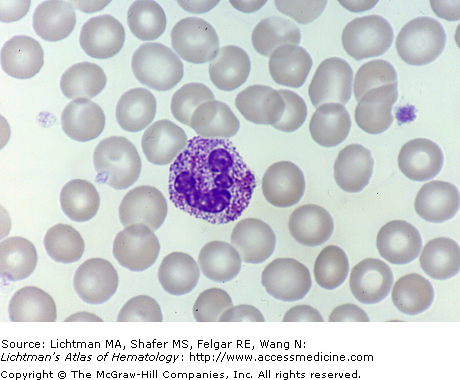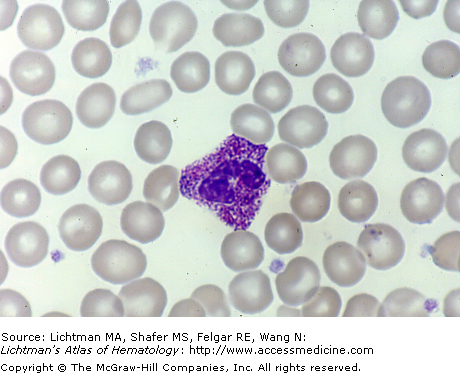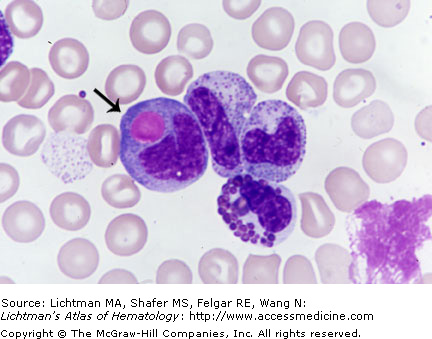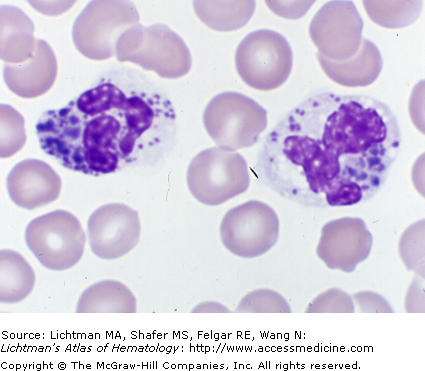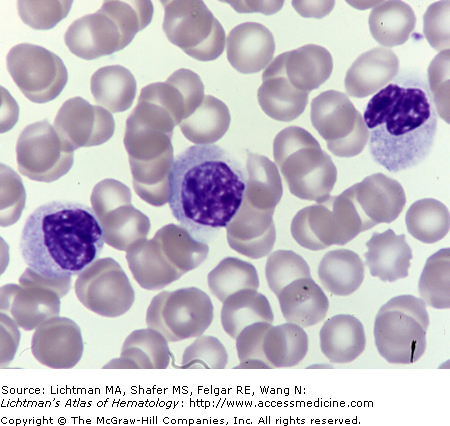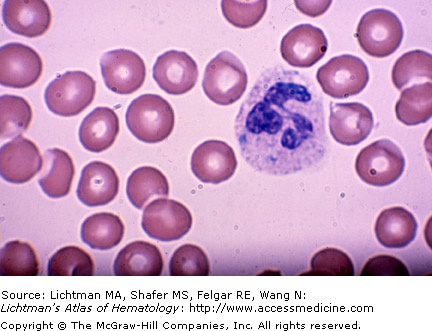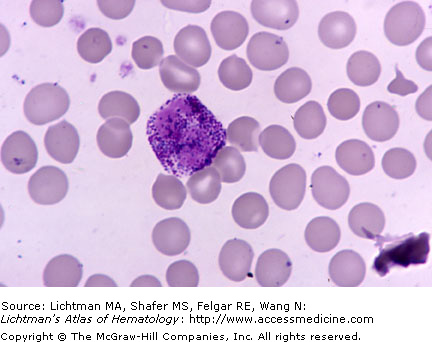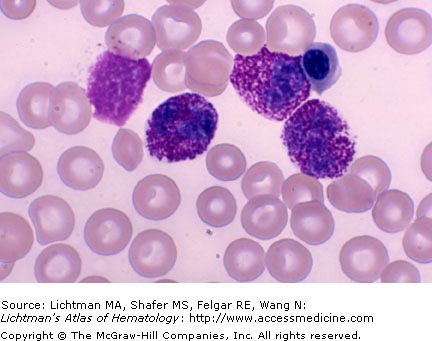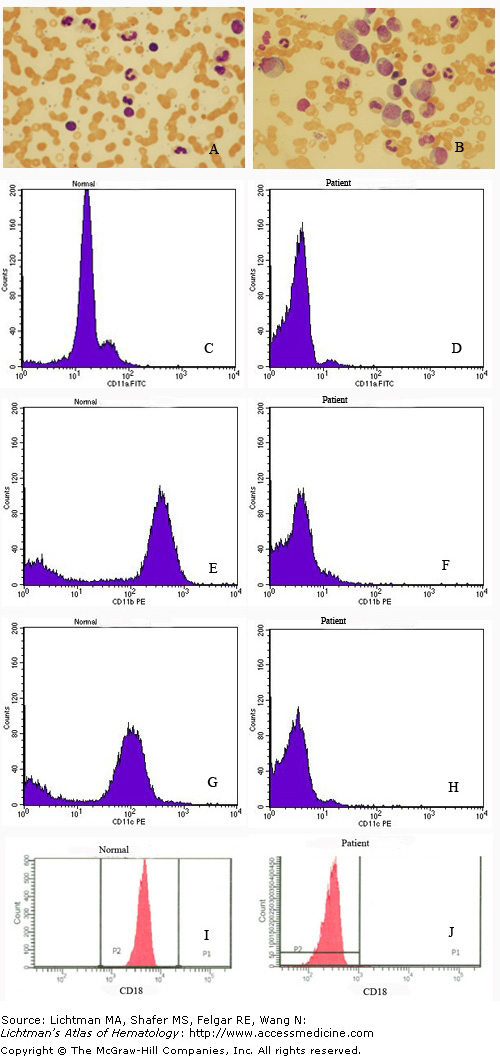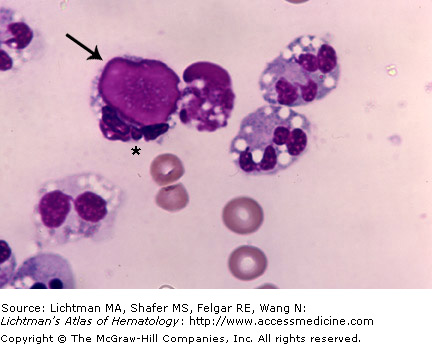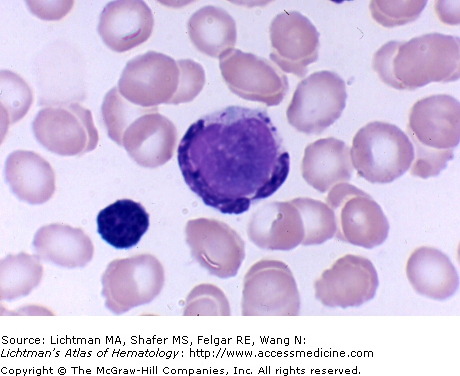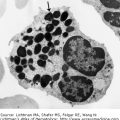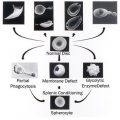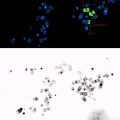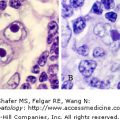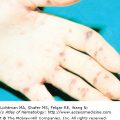II.C.001 Alder-Reilly Anomaly
II.C.002 Alder-Reilly Anomaly
II.C.003 Chediak-Higashi disease
II.C.004 Chediak-Higashi disease
II.C.005 Chediak-Higashi Disease
II.C.005
Chediak-Higashi Disease. Blood film showing variable sized abnormal granules in the cytoplasm of neutrophils. Note varying sized abnormal granules from giant-sized to large granules. These abnormal granules are characteristic morphologic findings in cells in this autosomal recessive disorder.
II.C.006 Colchicine Poisoning
II.C.007 Döhle Bodies
II.C.007
Döhle bodies. Blood film. Large bluish granules in the cytoplasm of neutrophils as a reflection of inflammatory state. These inclusions are thought to represent basophilic material carried over from the promyelocyte stage, normally degraded, as a result of accelerated maturation of neutrophil precursors during inflammatory states
II.C.008 Hurler Disease
II.C.008
Hurler disease. Neutrophil. Blood film. Note numerous cytoplasmic granules characteristic of this mucopolysaccharidosis. Presumably these are lysosomal accumulations of glycosaminoglycans, characteristic of a deficiency in enzymes that degrade glycosaminoglycan (α-L-iduronidase in Hurler disease).
II.C.009 Hurler Disease
II.C.009
Hurler disease. Neutrophil. Blood film. Note numerous cytoplasmic granules characteristic of this mucopolysaccharidosis. Presumably these are lysosomal accumulations of glycosaminoglycans, characteristic of a deficiency in enzymes that degrade glycosaminoglycan (α-L-iduronidase in Hurler disease).
II.C.010 Leukocyte Adhesion Deficiency-1
II.C.010
Leukocyte Adhesion Deficiency-1. Infant with Hemophilus sp. septicemia, Proteus sp. in urine culture, and viral otitis media. White cell count 55 X 109/L. (A) Blood film. Leukocytosis and neutrophilia. (B) Marrow film. Granulocytic hyperplasia. C) Healthy control. Flow cytometry of total leukocytes for CD11a. (D) Patient. Flow cytometry of total leukocytes for CD11a. E) Healthy control. Flow cytometry of total leukocytes for CD11b. (F) Patient. Flow cytometry of total leukocytes for CD11b. (G) Healthy control. Flow cytometry of total leukocytes for CD11c (H) Patient. Flow cytometry of total leukocytes for CD11c. I) Healthy control. Flow cytometry for CD18. Gated to neutrophils. (J) Patient. Flow cytometry for CD18. Gated to neutrophils. The infections, neutrophilia, and marked deficiency of CD11 and CD18 are diagnostic of leukocyte adhesion deficiency.
II.C.011 Lupus Erythematosus (L-E) Cell
II.C.011
Lupus erythematosus (L-E) cell. Pleural fluid. A neutrophil with an ingested large nucleus (nucleophagocytosis) (arrow) compressing the nucleus of the neutrophil (asterisk). This appearance is characteristic of the L-E cell found in the blood, marrow, or serous effusions in patients with lupus erythematosus. Search for such cells as diagnostic clues has been replaced by other immunological tests (e.g. antinuclear antibody).
II.C.012 Lupus Erythematosus (L-E) Cell

